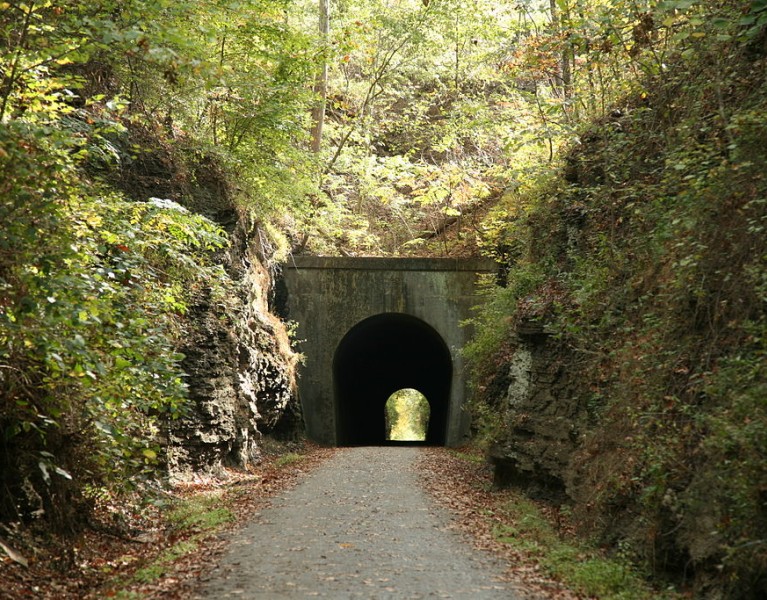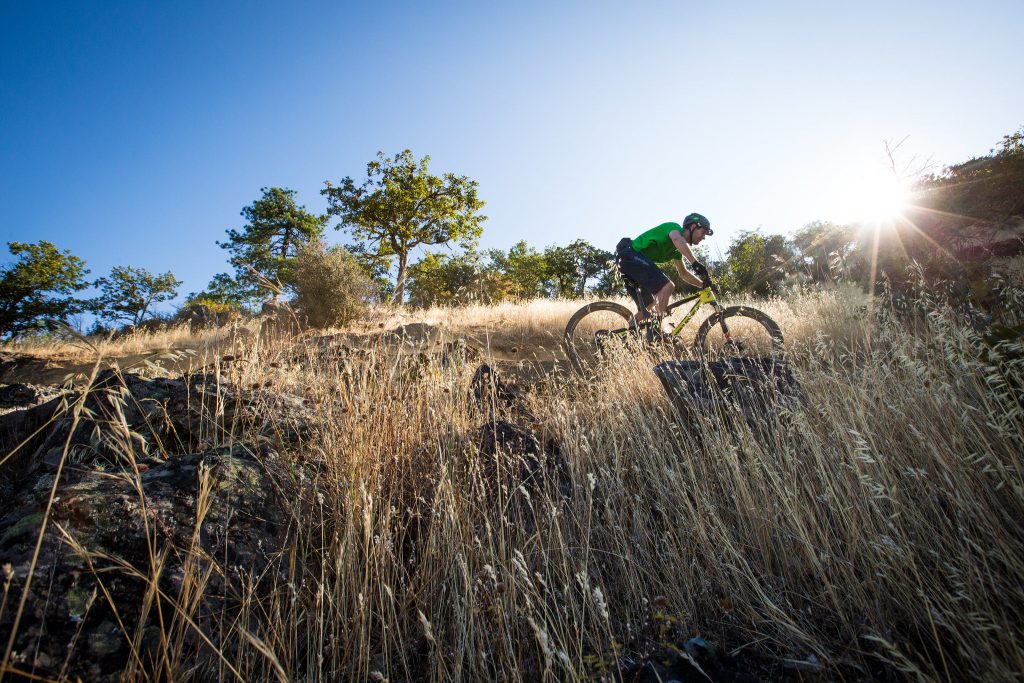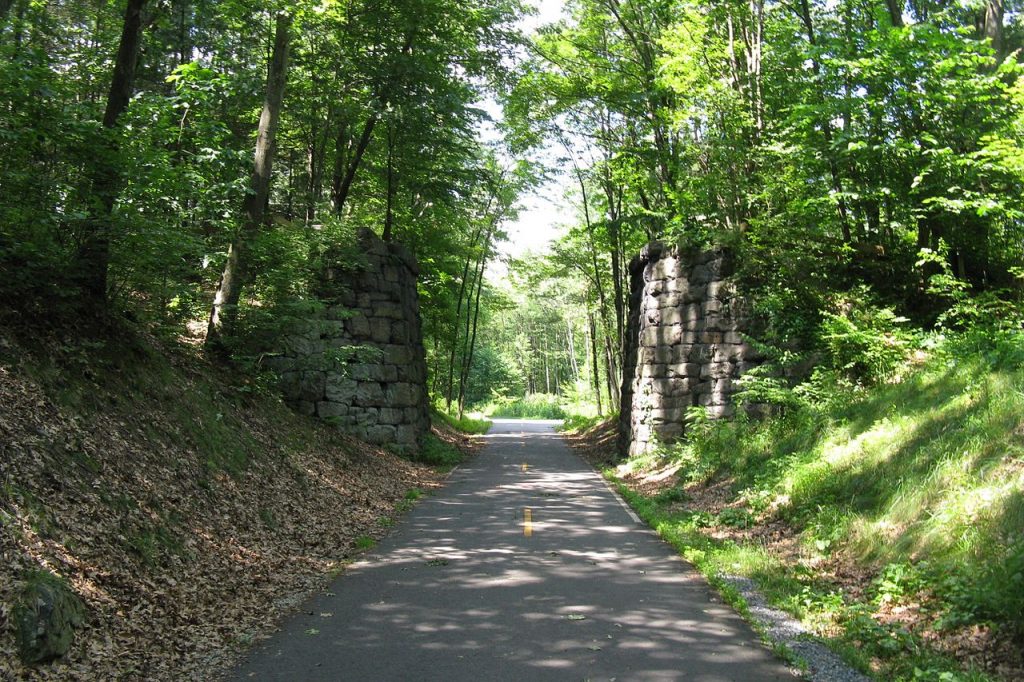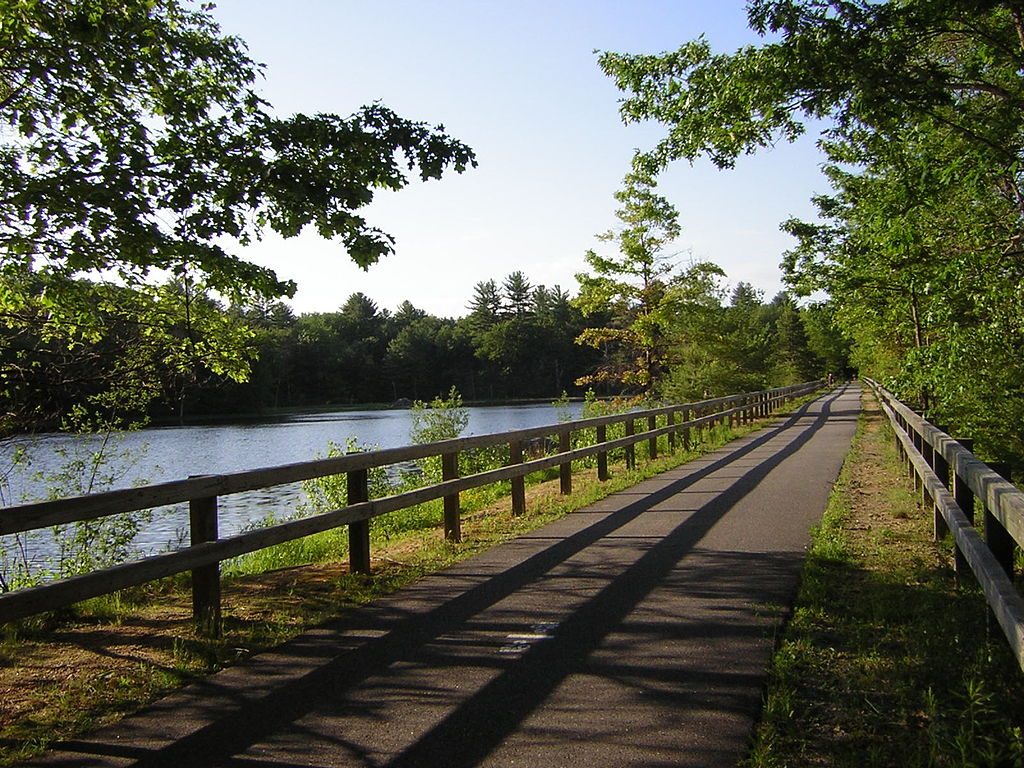
The Buzz about the Great American Rail Trail
Table of Contents [Show]
Imagine a day when a long-distance cycling trip doesn't involve getting blown off the road speeding tractor trailers. That day's on the horizon. By the time today's toddlers are old enough to drive, they might not need a car for a cross-country adventure, or full-body armor to bike from the Pacific Ocean to the East Coast.
Barely more than six months after the official completion of Canada's Great Trail, the Rails-to-Trails Conservancy (RTC) announced the finalized route for the United States' counterpart. The Great American Rail-Trail will stretch along a scenic and historic northern route from Washington State to Washington, D.C.
The project is already 52% complete. The RTC plans to build 1700 miles of new, multi-use trails to connect 1900 miles of existing paved, gravel, and dirt routes, and the communities through which they travel. The organization has a long road ahead of them, estimating decades until completion, but they're predicting a snowball effect of support and enthusiasm as trail development progresses.
What's Great American Rail-Trail's Route?
Unlike the TransAmerica Trail, an over-the-road bike route mapped out between 1973 and 1976 for the 4000-rider-strong Bikecentennial ride, the Great American Rail-Trail is dedicated to human- and horse-powered transportation. The Rails-to Trails-Conservancy has been incubating the project since the late 1980s, gathering Global Information System (GIS) mapping data of existing and developing groomed trails to determine the most feasible corridor.
In the meantime, they solicited input and support from local advocacy groups and government agencies. In October 2018, RTC identified a potential route that met their criteria, through which local organizations had already completed significant trail miles on their own or under the RTC guidance. On May 8, 2019, they made it official. Some pages on their website still refer to the plan as the preferred route, which is entirely reasonable given the project's scope.

Here are the states you'll visit should you travel through time and tackle the entire trail system from the Pacific Ocean to the nation's capital:
- Washington
- Idaho
- Montana
- Wyoming
- Nebraska
- Iowa
- Illinois
- Indiana
- Ohio
- Pennsylvania
- West Virginia
- Maryland
The longest gaps are in the Great Plains states, while D.C. and Maryland are all buttoned up. The Idaho, Illinois, Pennsylvania, and West Virginia segments are close behind.
Want a sneak peek? TrailLink is RTC's online portal to trail highlights and maps for existing sections of the Great American Rail Trail, and for multi-use corridors throughout the U.S.
Who are these Rails-to-Trails people, anyway?
Rails-to-Trails Conservancy advocates for the transformation of disused railroad beds into multi-use recreational trails. Founded in 1986, they foster collaboration between local government agencies and community groups to help promote, fund, plan, design, and construct these corridors. RTC is based in the District of Columbia, with field offices in California, Florida, Ohio, and Philadelphia.
The group also promotes "rail with trail" projects, utilizing easements alongside active rail lines when the passageways are wide and safe enough.
Who's funding the Great American Rail-Trail?
As with the existing local trails, the Great American Rail-Trail relies upon federal, state, and local public funds, and private donations and grants. RTC doesn't give an estimated dollar amount on the project, likely because all multi-phase projects are prone to speed bumps.
Development expenses go far beyond those invested in physical construction, and RTC has posted several calls-to-action for donations. They're promoting initiatives to assist communities along the proposed route with issues such as fundraising, right-of-way land transfers, and impact studies.

What the Great American Rail-Trail means for communities
"The trail will directly serve nearly 50 million people within 50 miles of the route," according to RTC. The trail has the potential to boost local economies and encourage new development, much as the original railroads did during western expansion.
Many of the cities and towns along the planned route have already experienced the benefits of their own local multi-use trail systems, and communities yet to break ground on their own projects can refer to these literal trailblazers—and those elsewhere in the country—as case study subjects.
Though it's not part of the Great American Rail-Trail, we encourage you to check out the Joseph Branch Trail organizers' planning meeting talking points and website. The trail plan is a great example of one rural Oregon community's campaign to build a trail of their own. Keep an eye on this project; if you haven't been to the Wallowas and surrounding countryside, you haven't lived.
For home buyers, access to trails is a selling point. According to the most recent data from the American Association of Home Builders, "Among the top four most-wanted amenities, three were the same for every age group (Millennials, GenXers, and Baby Boomers): They all desire to live in a community that's typically suburban, with close proximity to a park area, and that has access to walking/jogging trails."
For rural, urban, and suburban areas, multi-purpose trails offer a financially viable means of getting around, especially where public transportation systems fall painfully short. Where the trail runs through towns, as opposed to around them, the corridors offer low-cost fitness opportunities, access to green spaces, and the potential to reduce road traffic.
Re-purposed rail beds can rejuvenate "off-the-beaten track" towns that would benefit from adventure tourism dollars: restaurants, campgrounds, hotels, and resupply stores. Since access to the trail system might encourage locals to spend more time cycling, Nordic skiing, horseback riding, running, and hiking, those same outdoor businesses could enjoy more patronage from within the community.
Since the trails will rely on local efforts for maintenance and monitoring, the Great American Rail Trail may serve as a means of rallying communities together.

What the trail means for adventurers like us
The KÜHL crowd includes people of all skill levels, abilities, and outdoor passions. Many of us have helped establish green spaces, athletic facilities, and multi-purpose corridors in our own towns and cities. Some of us have dreamed of a cycling version of the Pacific Crest, Appalachian, or Continental Divide trails. More than a few of us have physical limitations that sideline us from technical thru-hikes, but could never curb our enthusiasm for enjoying the relative accessibility of wide, groomed recreational trails.
The planned system offers a much-needed compromise between backcountry backpacking and vehicle-bound touring, while providing the safety net of reasonable access to emergency services.
While completion is a long way off, you don't have to wait until your first hip replacement. Section the trail any time! Visit any one of the towns and cities that have already built their corridors, and get caught up in the momentum by helping out with the effort, or by advocating for trails in your own backyard.
Check out our KÜHLest outdoor clothing and travel products, and stock up on gear for your next expedition!
Featured image from Wikimedia Commons. © Creative Commons 2008.


